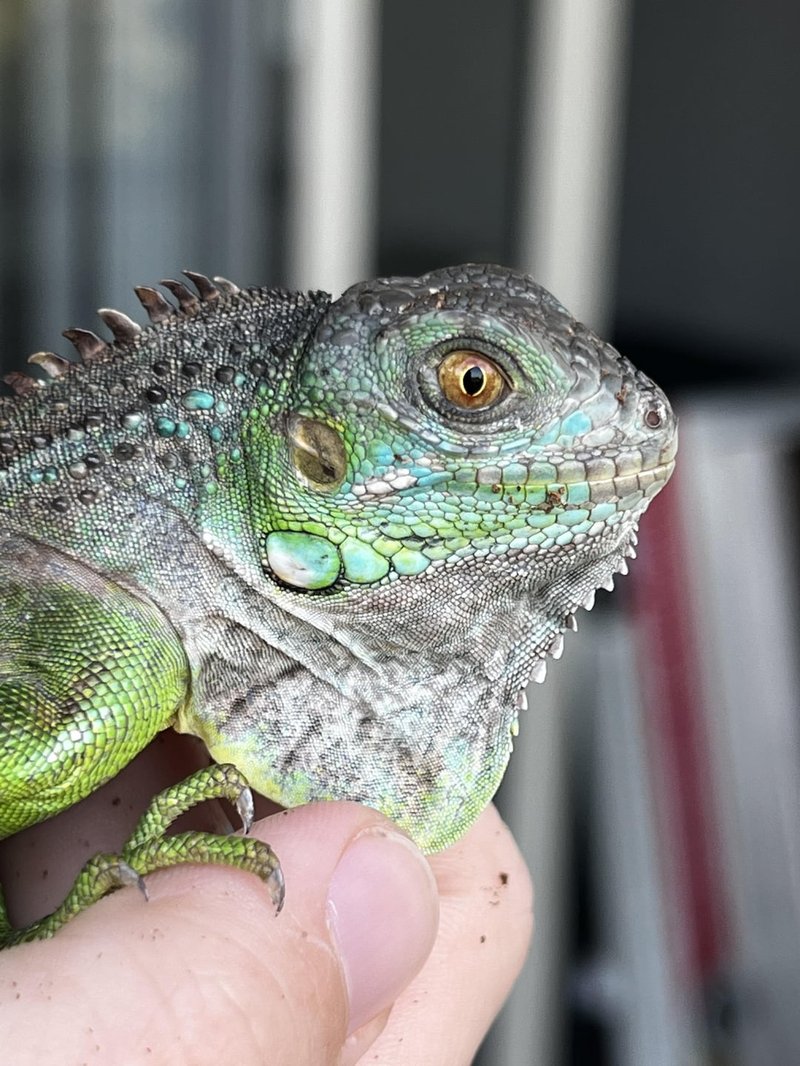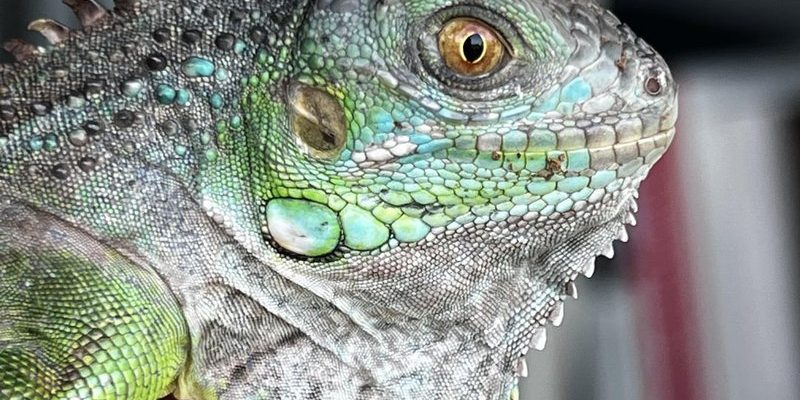
To ensure this, it’s crucial to understand their specific needs, from habitat setup to handling techniques. Handling your blue iguana safely and comfortably is about more than just grabbing them; it’s about creating an environment where they feel secure and cared for. In this guide, we’ll dive into practical steps that will help you bond with your blue iguana while making sure you both enjoy the experience.
Understanding Your Blue Iguana’s Needs
Before you can handle your blue iguana, you need to understand what they require to be happy. Blue iguanas are not just ornamental pets; they are living beings with their own needs. Think of them like a young child who requires special attention and care. They thrive in warm, humid environments and need plenty of space to move around.
If you’re new to iguana care, you might be surprised to learn that they can grow quite large—up to 6 feet long! This means having a spacious enclosure is vital. Aim for at least a 4-foot by 2-foot cage with proper heating, lighting, and humidity controls. A UVB light is essential for their health, helping them synthesize vitamin D3, which is crucial for strong bones. Here’s what your setup should include:
- Heat Source: A basking spot around 95°F (35°C)
- Humidity: Keep humidity levels between 60-70%
- Diet: Fresh greens, fruits, and specially formulated iguana food
- Hiding Spots: Provide places where they can retreat to feel safe
By creating a welcoming habitat, you’ll make your blue iguana feel right at home, lowering stress for both of you.
How to Approach Your Blue Iguana
Now that you’ve got the habitat sorted, let’s discuss how to approach your blue iguana. When handling, it’s essential to keep their comfort in mind. Iguanas can be skittish, particularly if they’re not used to being handled. Think of it like trying to pet a cat that’s never seen a human before.
Start by spending time near the enclosure without touching them. Talk softly to build trust, letting them get used to your presence. Once they seem comfortable, you can gently offer your hand. Here’s how to do it:
1. Use a Calm Voice: Speak softly as you approach their enclosure.
2. Extend a Hand: Offer your hand low to the ground. This way, they can choose to come to you.
3. Avoid Quick Movements: Sudden motions can scare them, so move slowly.
4. Observe Their Body Language: If they puff up or hiss, give them space. This is their way of saying they’re uncomfortable.
Establishing trust takes time, but once they understand that you mean no harm, they’ll be much more receptive to being handled.
The Best Techniques for Handling
Handling your blue iguana correctly is key to keeping both you and your pet safe. It’s not just about picking them up; it’s about doing it in a way that feels natural for them. Imagine trying to carry a giant loaf of bread without squishing it. You want to be gentle yet firm.
Here are some effective techniques for handling your blue iguana:
- Support Their Body: Always support their entire body when lifting them, especially their back legs, which can easily drop.
- Cradle Them: When holding them, cradle them close to your body. This gives them stability and security.
- Limit Handling Time: Especially in the beginning, keep handling sessions short—around 10-15 minutes—to avoid stressing them out.
- Stay Calm: If you’re feeling anxious, your iguana will sense that. Stay relaxed, and let them feel your calm energy.
By using these techniques, you’ll ensure that both you and your blue iguana feel comfortable during your interactions.
Recognizing Stress Signals in Your Blue Iguana
Just like any pet, your blue iguana can experience stress. It’s crucial to recognize the signs before they escalate into bigger problems. Think about how your dog might react if they’re scared; iguanas have their own ways of showing distress.
Common stress signals include:
- Hissing or Puffing: This is a clear sign they feel threatened.
- Tail Whipping: A defensive response that shows they’re on alert.
- Belly Flattening: This position indicates they’re trying to escape or hide.
- Refusal to Eat: If your iguana stops eating, it might be time to reassess their environment or handling.
If you notice any of these signs, it might be best to give your iguana some space. Remember, handling should never feel like a chore for either of you.
Creating a Routine for Handling
When it comes to handling your blue iguana, establishing a regular routine can be beneficial. Just as we thrive on routine, so do our pets. They might feel more secure knowing what to expect from their interactions with you.
You can start by setting a specific time each day for handling. Here’s a simple routine you could follow:
1. Morning Check-Ins: Spend a few minutes observing your iguana and ensuring they’re healthy. Look for signs of stress or illness.
2. Handling Sessions: Pick a time when you’re both relaxed—maybe after a meal when they’re more inclined to be calm.
3. Regular Feeding: Feed them at the same time daily to establish predictability in their schedule. This can also help you monitor their eating habits.
4. Evening Wind Down: Before bedtime, spend time just sitting near their enclosure. This helps them feel secure and strengthens your bond.
By creating this routine, you’re not just handling your iguana; you’re building a relationship based on trust and consistency.
Providing Enrichment for Your Blue Iguana
Keeping your blue iguana engaged is essential for their well-being. An enriched environment helps prevent boredom and promotes healthy behaviors. Think of it like giving a child toys to play with; it keeps their minds active and happy.
Here are some ways to enhance their habitat:
- Climbing Structures: Provide branches and hammocks for climbing and resting.
- Hideouts: Adding caves or tunnels gives them a place to retreat when they need their privacy.
- Toys and Tools: Simple items like cardboard boxes can provide mental stimulation. Just remember to use safe materials!
- New Scents: Occasionally switch their plants or introduce new greens. The novelty can pique their interest!
Creating a stimulating environment will not only make your blue iguana happier but will also make your interactions more enjoyable.
Handling your blue iguana safely and comfortably is all about understanding their unique needs and building a bond rooted in trust. Remember, patience is key. It’s like learning a new dance—at first, it feels awkward, but with practice, it becomes second nature.
By following these steps—from creating a suitable habitat to recognizing stress signals and providing enrichment—you’re setting the stage for a rewarding relationship. The more you invest in understanding and caring for your blue iguana, the more you’ll both enjoy each other’s company. Whether you’re just starting out or looking to enhance your existing care routine, these tips will help you create a safe and loving environment to ensure your blue iguana thrives. Happy bonding!

